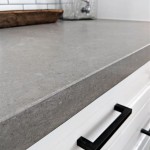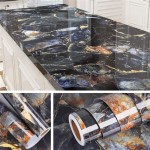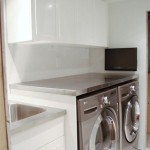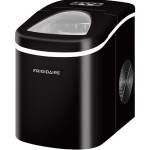Best Affordable Countertop Ice Makers: A Comprehensive Guide
Countertop ice makers have emerged as a convenient solution for individuals and families seeking a readily available supply of ice without the complexities of plumbing or the space requirements of larger, dedicated ice machines. These compact appliances offer a practical way to produce ice quickly and efficiently, making them ideal for a variety of uses, from chilling beverages to filling ice buckets for parties and gatherings. The market offers a diverse range of countertop ice makers, each with varying features, capacities, and price points. This article aims to provide a comprehensive guide to understanding and selecting the best affordable countertop ice maker, focusing on key factors that influence performance, durability, and overall value.
The term "affordable" is subjective and varies based on individual budgets and needs. For the purpose of this article, "affordable" will be defined as countertop ice makers typically priced under $200. These models often represent a balance between functionality and cost-effectiveness, providing a reasonable ice-making capacity and performance level without requiring a significant financial investment.
When evaluating countertop ice makers, several factors should be considered. These include ice production capacity, ice shape and size, water reservoir capacity, ice storage capacity, cycle time, operational features, noise level, energy consumption, and overall build quality. A thorough understanding of these aspects will enable consumers to make informed decisions that align with their specific requirements and preferences.
Understanding Ice Production Capacity and Cycle Time
Ice production capacity is a crucial factor to consider when selecting a countertop ice maker. This specification indicates the amount of ice the machine can produce within a 24-hour period, typically measured in pounds. A higher ice production capacity is generally desirable for households with larger families or for individuals who frequently entertain guests. Affordable countertop ice makers typically range from producing 20 to 30 pounds of ice per day, which is often sufficient for average household needs. However, it's important to recognize that actual ice production may vary depending on ambient temperature and water temperature.
Cycle time refers to the duration required for the ice maker to produce a batch of ice. Shorter cycle times are advantageous, as they allow for a more rapid replenishment of ice. Most countertop ice makers can produce a batch of ice within 6 to 15 minutes. This cycle time may vary depending on the model, the selected ice size (small, medium, or large), and the environmental conditions. When comparing different models, it is essential to consider both the ice production capacity and the cycle time to determine the overall efficiency and suitability of the ice maker for specific needs.
The relationship between ice production capacity, cycle time, and ice bin capacity requires careful consideration. A rapid cycle time paired with a limited ice storage capacity may necessitate frequent emptying of the ice bin, which can be inconvenient. Conversely, a larger ice bin coupled with a slower cycle time may provide a more continuous supply of ice, but may also take longer to initially fill the bin. Consumers should assess their typical ice usage patterns to determine the optimum balance between these factors.
Analyzing Ice Shape, Size and Water Reservoir Capacity
Countertop ice makers produce ice in a variety of shapes and sizes. The most common ice shapes include bullet-shaped ice, nugget ice, and cube-shaped ice. Bullet-shaped ice is characterized by its cylindrical shape with a hollow core. It is often preferred for its ability to float easily and for its suitability for blending. Nugget ice, also known as sonic ice or pebble ice, is soft and chewable and is often favored for beverages. Cube-shaped ice is the most traditional form of ice and is typically used in a wide range of applications.
The available ice sizes typically include small, medium, and large. The selection of ice size is often a matter of personal preference, with smaller ice sizes melting more quickly and larger ice sizes lasting longer. Some models allow users to select the desired ice size, while others offer only a single ice size option. When evaluating different models, it is important to consider the range of available ice sizes and shapes to determine whether they meet specific needs.
Water reservoir capacity directly impacts the frequency with which the ice maker needs to be refilled. A larger water reservoir allows for a greater volume of ice to be produced before requiring a refill. Affordable countertop ice makers typically have water reservoir capacities ranging from 1 to 3 liters. The ideal water reservoir capacity will depend on the user's ice consumption habits. Individuals who use ice frequently may benefit from a larger water reservoir, while those who use ice less often may find a smaller reservoir sufficient. It's also important to consider the ease of refilling the water reservoir. A removable reservoir with a wide opening is generally more convenient to refill than a fixed reservoir with a small opening.
Evaluating Operational Features, Noise Level, and Energy Consumption
Countertop ice makers often come equipped with a range of operational features that enhance their convenience and usability. These features may include an automatic shut-off function, which stops ice production when the ice bin is full; a low-water indicator, which alerts the user when the water reservoir needs refilling; a self-cleaning function, which simplifies maintenance; and a timer, which allows users to schedule ice production in advance. These features can significantly improve the user experience and should be considered when comparing different models.
The noise level of a countertop ice maker can be a significant consideration, particularly for individuals who plan to use the ice maker in a quiet environment, such as a home office or bedroom. Ice makers typically produce noise during the ice-making process, which involves the operation of a compressor and a fan. Some models are designed to operate more quietly than others. Noise levels are typically measured in decibels (dB), with lower decibel ratings indicating quieter operation. While it is difficult to definitively quantify the noise level of a specific model without testing, reading user reviews can provide insights into the perceived noise level of different ice makers.
Energy consumption is another important factor to consider, as it directly impacts the operating cost of the ice maker. Ice makers consume energy during the ice-making process, and energy consumption can vary significantly depending on the model and the usage frequency. Energy-efficient ice makers are designed to minimize energy consumption without sacrificing performance. While specific energy consumption data may not be readily available for all models, looking for ice makers with energy-saving features, such as automatic shut-off and well-insulated ice bins, can help reduce energy consumption. Furthermore, unplugging the ice maker when it is not in use can also help conserve energy.
Beyond the considerations detailed above, it is crucial to examine the build quality and materials used in the construction of the countertop ice maker. Sturdy construction and durable materials contribute to the longevity and reliability of the appliance. Stainless steel exteriors are often preferred for their resistance to corrosion and their ease of cleaning. The quality of the internal components, such as the compressor and the water pump, is also important. Reading user reviews and researching the manufacturer's reputation can provide valuable insights into the build quality and reliability of different models.
Finally, the availability of warranty and customer support is a critical factor to consider. A comprehensive warranty provides assurance that the manufacturer stands behind the product and will address any defects or malfunctions. Accessible and responsive customer support can be invaluable for resolving any issues that may arise during the life of the ice maker. Before making a purchase, it's important to carefully review the warranty terms and conditions and to research the manufacturer's customer support reputation.

The 4 Best Countertop Ice Makers Of 2025 Reviews By Wirecutter

The 4 Best Countertop Ice Makers Of 2025 Reviews By Wirecutter

The 4 Best Countertop Ice Makers Of 2025 Reviews By Wirecutter

The 4 Best Countertop Ice Makers Of 2025 Reviews By Wirecutter

6 Best Countertop Ice Makers 2025 Reviewed Food Network

The Best Countertop Ice Maker For Fancy Cocktails Chilled Drinks 2025 Bon Appétit

The Best Countertop Ice Maker For Fancy Cocktails Chilled Drinks 2025 Bon Appétit

6 Best Countertop Ice Makers 2025 Reviewed Food Network

The 4 Best Countertop Ice Makers Of 2025 Reviews By Wirecutter

The Best Countertop Ice Maker For Fancy Cocktails Chilled Drinks 2025 Bon Appétit
See Also








